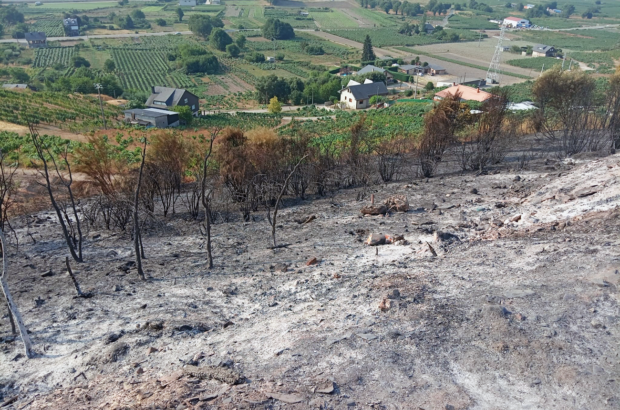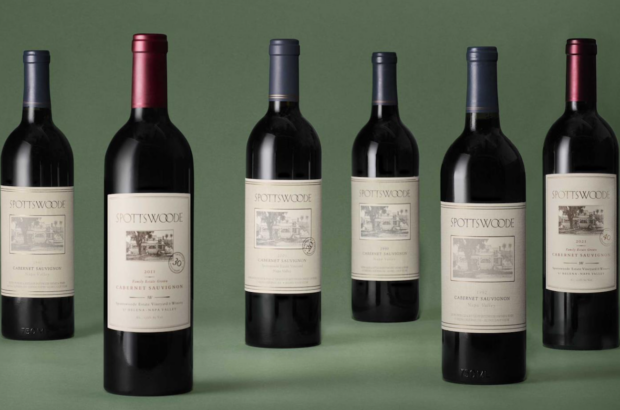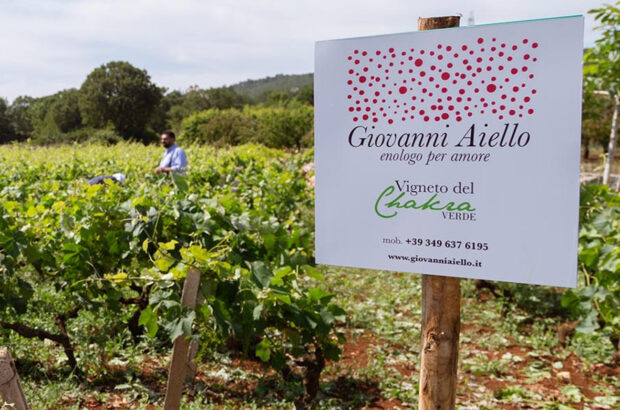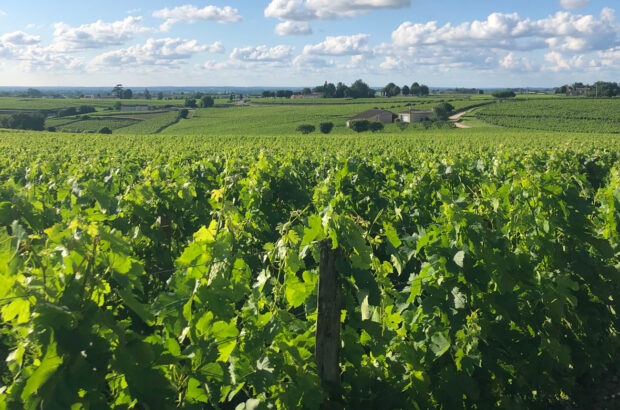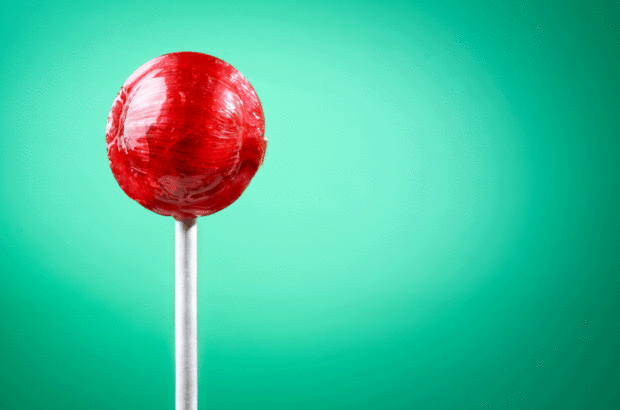Andrew Jefford tastes his way through a historic vertical.
Brothers Samuel, Roman, Gaël and Basile Guibert organised a 30-vintage vertical tasting of their family’s celebrated red Mas de Daumas Gassac back in 2014. I wrote (in the June 2014 issue of Decanter) that the wines were ‘sui generis: the sensorial offspring not merely of a place, but of a historical moment, of a fierce will and of a curious, non-conformist vision.’ The vision was that of their father, Aimé Guibert, who was present at the tasting; he died in 2016.
Mas de Daumas fans, though, will know that there is also a white wine, and a little earlier this year the family repeated the exercise with those whites. If the reds are sui generis, though, how does one accurately convey the utter originality of the whites? They’re sui generis squared.
When Aime Guibert presented the first vintage of his red wine to the world in 1978, it came groomed with a logic and an argument, based on the championing of its soil by celebrated Bordeaux geologist Henri Enjalbert, and with its core of 70% Cabernet Sauvignon, vinified according to the tenets of Bordeaux’s greatest late C20 oenologist, Emile Peynaud. Yes, it was an ambitous Languedoc baby – but it was born under a Médocain star.
The white Mas de Daumas, by contrast, is perhaps best seen as a kind of liquid novel: a pure work of the imagination rendered physical and poured into bottles rather than across paper pages. Here’s the story.
Peynaud was ‘totally against the idea,’ recalls Samuel Guibert. ‘He said to my Dad, “You’ve managed a grand cru for your red. Stay there. You don’t need to go and do a white as well. The Languedoc’s not a land for whites.”‘
Guibert held his ground. He started planting white varieties in 1976, and the first white wine was released a decade later. ‘My Dad was convinced that Languedoc could produce wine with sufficient freshness and acidity, in the cooler climate of the Gassac valley.’ The vineyards are 250-500m above sea level, remember, with most of the white varieties planted above 300m.
He initially planted Chardonnay (cuttings from Comte Lafon), Viognier (cuttings from Georges Vernay, whom he greatly admired) and Muscat (Petit Grain to begin with, but later Ottonel and d’Alexandrie, too).
Guibert and his wife Véronique de la Vaissière loved to travel, though, and wherever they went, they brought back a few cuttings of other vines and planted them. The red wine is made from around 30% of ‘other’ grape varieties, and the white, too, has copious exotic genes.
The difference is that in the white wine, two of those ‘other varieties’, Petit Manseng (cuttings from Charles Hours) and Chenin Blanc (cutting from Huët), saw their presence gradually amplified. ‘As the existing vineyard aged,’ Samuel remembers, ‘the wines gained complexity but lost freshness and acidity. That was where Petit Manseng and Chenin Blanc came in. They are an amazing tool to preserve that freshness.’ Petit Manseng has been as high as 39% of the blend (in 2004) and Chenin Blanc up to 15% (in 2015).
The ‘other varieties’, meanwhile, include — in alphabetical order — Albariño, Amigne, Bourboulenc, Falanghina, Fiano, Grechetto, Gros Manseng, Khondorni, Marsanne, Neheleschol, Petit Courbu, Petite Arvine, Roussanne, Sémillon, Sercial and Tchilar. (Khondorni and Tchilar are not listed in Wine Grapes, but are said to have been brought back from Armenia by Aimé Guibert.) In recent years, the percentage of these lesser varieties has varied between 11-17%.
It’s not possible with a patchwork of varieties to pick every one “at perfect maturity”, so some element of mixed ripeness has always been one of the keys to the character of the red Mas de Daumas Gassac.
This is even more true of the whites, as Samuel Guibert confirmed. ‘Absolutely. The Chardonnay and the Viognier usually come in slightly overripe, at 14 or 14.5% abv, whereas the Chenin Blanc, the Petite Arvine and the Sercial come in at 12% abv. It’s a patchwork not just of grape varieties but also of acidity and alcohol levels.
‘The Petit Manseng brings a huge amount of acidity whereas the Viognier is very low in acidity. They all bring something different. That’s what we are looking for.’ All of the different varieties are picked by vineyard zone within a 10-day period.
White Mas de Daumas Gassac, therefore, is a test case for those who are interested in the sensorial effects of mixed ripeness on a finished wine. It’s generally low pH (never higher than 3.35 since 2004) and has high acidity (6.3 g/l measured as tartaric in 2017, for example; even in the hot vintage of 2003 it measured 5 g/l).
That’s not all. Another originality is that it is a ‘dry’ wine … rounded out with some residual sugar. ‘It’s a deliberate strategy,’ confirms Samuel. Why? ‘In some of the early vintages, when we made the wines fully dry, there was a bitterness which was not to our liking.’ As the Guiberts retain this residual sugar by chilling the wine towards the end of fermentation, the level has varied considerably: sometimes fermentations have stopped swiftly leaving ample sugar, but on other occasions the yeasts have been more tenacious and the sugars have continued to erode before fermentation stops.
The 1996 vintage was sweetest with 16 g/l while the 2013-2015 trio have between 11.6 and 12.2 g/l; the aim is to fix sugars at 5g-6g for the future. There was some use of oak up until 1999, but no longer.
The final singularity is the use of copious skin contact. ‘This was a concept invented by my Dad based on what he was already doing for the reds.’
At harvest, the grapes are destemmed and cooled, and then everything undergoes a three to seven day maceration period with rack and return and juice blending three times a day, before pressing and fermentation, which is cool (14C to 22C).
Orange-wine fans shouldn’t get too excited: as the must is chilled and in the aqueous rather than the alcoholic phase, what’s being extracted is principally aromatics rather than tannins. After fermentation, the wines rest in steel and are bottled at around the six-month point. (Prior to 2000, they were lightly wooded.)
That’s Aimé Guibert’s novel written in white wine, still faithfully duplicated (with the odd tweak) by his sons — and still very popular (the mailing-list release price of the white is exactly the same as that of the red, at around 35 euros a bottle).
My five top tasting notes from among the whites are given below, but subscribers to Decanter Premium can hook up with tasting notes for all 22 of the vintages – as well as specially written notes for recent vintages of the red wine (2010 to 2016 inclusive, with a peek at a barrel-sample of the 2017).
Tasting Mas de Daumas Gassac Blanc
A quick summary? Mas de Daumas white is aromatically complex, vivacious and nuanced. In general, it comes across as more ‘northern’ and less ‘southern’ than the Languedoc location would suggest. Look out for orchard fruits (both temperate and tropical), a zesty balance in the mouth and a well-rounded finish. Its proportions, like those of its red sibling, can often surprise with their delicate classicism: these are in no sense rich, warm or ‘big’ wines, but rather shapely and fresh, with a lively drinking balance.
Compare all Daumas Gassac white wine tasting notes and ratings here
Five to try:



